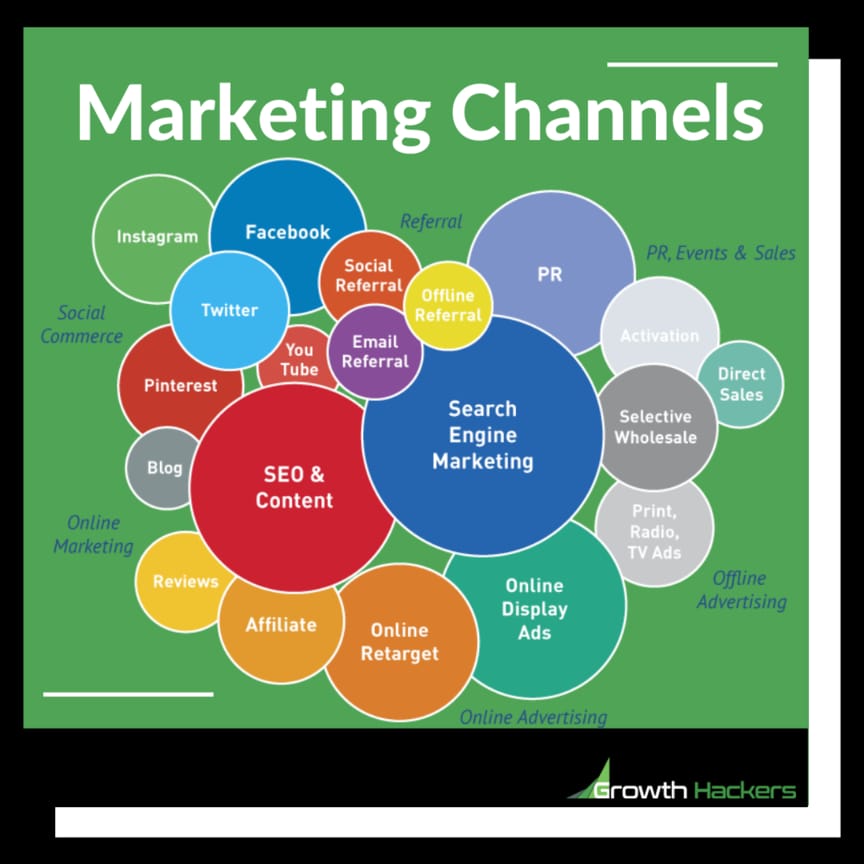You need to make certain critical decisions when first starting a business. Some of them are basic decisions you’ll make fairly early on. For example, you have to choose a corporate structure. Once you have, you’ll also need to take steps to officially set up your business. An example would be drafting a solid LLC operating agreement if you choose to become an LLC. You probably understand this. While taking these types of early steps is of course important, it’s also smart to begin making decisions about your approach to SEO and marketing early. Consider how many marketing channels you have to choose from when deciding how to spend your marketing budget. Odds are good that at this stage, you can’t use all of them. You need to determine where to focus your efforts and investment from the start to propel early growth. This guide will help. If you’re not sure whether you should prioritize LinkedIn marketing, Pinterest ads, or any other popular digital marketing channel or technique, keep reading. The following tips make deciding how to approach small business marketing from the start much easier.
Define Certain Critical Details Regarding Your Audience
Most business owners understand they need to define their audience and potential customer base to ensure they’re not wasting any time promoting their goods and services to those who won’t have any interest in them. However, when defining an audience, it’s particularly essential to include details about your ideal customer that will allow you to conduct effective research when deciding how to develop an early marketing strategy. Some details you might include when imagining your ideal customer may be genuinely valuable, but might nevertheless be of little use when you’re researching marketing channels. For instance, it could certainly be important to know that your perfect customer likes to cook or enjoys outdoor activities, but those aren’t the only types of details you should include in your description of a target audience. You also need to include details that can tell you which digital channels a customer most likely uses. For instance, if you determine your target audience consists of teenagers and twentysomethings, you can then research where they spend their time online and which apps they use. You might find that TikTok is particularly popular among this age group. Thus, it would make sense to develop a TikTok marketing strategy. That’s not to say basic demographic details are the only details that can help you research marketing channels worth prioritizing. Some more specific lifestyle elements can also help you with this process. Perhaps your target audience is still fairly young, consisting of individuals in their twenties and thirties, but they’re also typically educated and ambitious people. In this case, even though they may still fall into the age range of most TikTok users, your marketing content might have a better chance of reaching and resonating with your potential customers if you post it on LinkedIn instead. The main point to keep in mind is that, when conducting early research to determine which marketing channels are best for your brand, you need to consider the types of details that allow you to conduct truly valuable research. Again, that’s not to say details like “our ideal customer is a big football fan” aren’t useful at all—these details will certainly be useful when you begin generating actual marketing content—they’re simply not details that are likely to help you make initial decisions about which channels to use.

Consider the Nature of Your Services and Products
The example above, in which an audience may consist of young people who might use both TikTok and LinkedIn, highlights an important point: when you first start researching marketing channels, it may not be immediately clear which channels are right for your marketing content. Typically, more than one channel is ideal. You’ll naturally reach more potential customers if you cast as wide a net as possible. However, when your business is first growing and your budget is tight, you might not be able to justify marketing across a fairly wide range of channels immediately. You’ll instead need to focus on channels that will deliver the strongest return-on-investment first. Another way to determine which channels these may be is to simply consider the nature of your products and services. Continuing with the example above, if your product is a fun mobile game, you’ll naturally have a better chance of attracting customers if you market via TikTok instead of LinkedIn. On the other hand, if you offer informational webinars helping young entrepreneurs grow their own businesses, LinkedIn would be the better choice. That’s an example in which it’s fairly obvious which channel is preferable. Sometimes you might need to spend some more time probing the nature of your products and services to decide between two marketing channels that at first may seem equally valuable. Generally, though, when your initial demographic research tells you that your target audience can theoretically be reached via a range of channels, choosing which ones to develop early marketing content for becomes much easier when you think about what type of product you’re offering.

Consider Types of Marketing Content
It’s very wise to remember that you don’t need to generate your own marketing content. In fact, you probably shouldn’t. Growing a business involves devoting significant time and money to a wide range of tasks and investments. You shouldn’t stretch your bandwidth by trying to generate marketing content on your own. You’re better off partnering with experts who can handle this critical task for you. That said, again, your budget may be quite small early on. You therefore may decide that before you can justify hiring an outside agency to create marketing content and campaigns for you, you’ll have to run an initial campaign just to generate early interest consisting of content you’ve made yourself. If so, when considering which marketing channels to prioritize, research the types of marketing content that tends to be posted on those channels. This can help you determine which channels to focus on. You’ll consider your resources and budget, deciding what type of content you can theoretically generate quickly and easily, thus determining which channels are right for your first campaigns. However, your resources and budget aren’t the only factors to consider when researching the types of content various marketing channels tend to feature. You also need to decide which types of content best demonstrate the value of your products. To use a basic example, if you’re starting a B2B business, your content needs to consist of blog posts, videos, infographics, and similar types of content that allow you to clearly describe in specific detail why your services are valuable. It can be very difficult to describe the value of B2B services through a typical Pinterest or Instagram ad. Remember, choosing the right channels is only one component of developing and implementing an effective startup marketing strategy and campaign. You also need to develop content that shows potential customers why they need your products and services. Luckily, when you define what type of content will most likely help you achieve this goal, you’ll also gain a better understanding of which channels you should promote your brand through.

Learn How to Measure Campaign Performance via Different Channels
Just as you already know you must define your target audience early, you also likely understand you need to be able to measure the performance of your marketing campaigns. No marketing campaign is perfect. The more you monitor performance, the more you’ll learn about what does and doesn’t work. This is key to making improvements when planning future campaigns. The understanding that measuring performance is important can also be helpful when you decide which channels to emphasize. When researching your options, also research how these various channels allow you to monitor campaign performance. Obviously, this information will be valuable later, as you’ll need to know precisely how to monitor campaign performance via whichever channels you settle on. However, before you decide on which channels to prioritize, you may learn that some channels give you limited means of monitoring campaign performance compared to others. If you’re struggling to choose from multiple channels, this is another way you can decide which are best for your brand.




